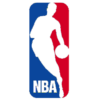When considering a team’s rebounding and offensive rebound percentage in NBA and NCAA basketball games for betting purposes in Canada, several strategies can be employed to make informed decisions:
- Comparison of Rebounding Statistics: Compare the rebounding statistics of both teams involved in the matchup, including total rebounds per game, offensive rebounds per game, defensive rebounds per game, and rebounding differential (rebounds per game minus opponent rebounds per game). Look for significant disparities in rebounding performance between the teams, as teams with a higher rebounding advantage may have a better chance of controlling the game flow and second-chance scoring opportunities.
- Analysis of Offensive Rebound Percentage: Pay close attention to each team’s offensive rebound percentage, which measures the percentage of available offensive rebounds a team retrieves during a game. Teams with a higher offensive rebound percentage typically generate more second-chance scoring opportunities, leading to increased scoring output. Conversely, teams with a lower offensive rebound percentage may struggle to capitalize on missed shots and maintain offensive efficiency.
- Impact on Point Spread and Totals Betting: Consider the impact of rebounding statistics on point spread and totals betting markets. Teams with a strong rebounding advantage may be more likely to cover the point spread, especially if they can control the boards and limit their opponents’ second-chance opportunities. Additionally, games involving teams with high offensive rebound percentages may have a higher likelihood of exceeding the total points line, as offensive rebounds often lead to additional scoring opportunities.
- Analysis of Matchup Dynamics: Evaluate how a team’s rebounding prowess matches up against its opponent’s strengths and weaknesses. For example, if one team excels in offensive rebounding but struggles defensively, they may exploit their opponent’s weaknesses to dominate the boards and generate scoring opportunities. Conversely, teams facing opponents with strong interior defense may prioritize defensive rebounding to limit their opponents’ second-chance scoring opportunities.
- Consideration of Pace and Playing Style: Take into account each team’s pace of play and playing style when analyzing rebounding statistics. Teams that play at a faster pace may have more rebounding opportunities due to increased possessions, while teams with a slower pace may prioritize defensive rebounding to control the tempo of the game. Additionally, teams that emphasize three-point shooting may have different rebounding dynamics compared to teams that rely more on interior scoring.
- Injury and Roster Updates: Monitor injury reports and roster updates to assess how potential lineup changes may impact a team’s rebounding performance. The absence of key rebounders or changes in lineup configurations can influence a team’s effectiveness on the boards and may present betting opportunities based on market overreactions or undervaluations.
By incorporating these strategies and considerations into your NBA and NCAA basketball betting approach in Canada, you can leverage rebounding statistics to identify value opportunities and make more informed betting decisions. As always, conduct thorough research, analyze multiple factors, and exercise sound bankroll management to maximize your chances of success.







